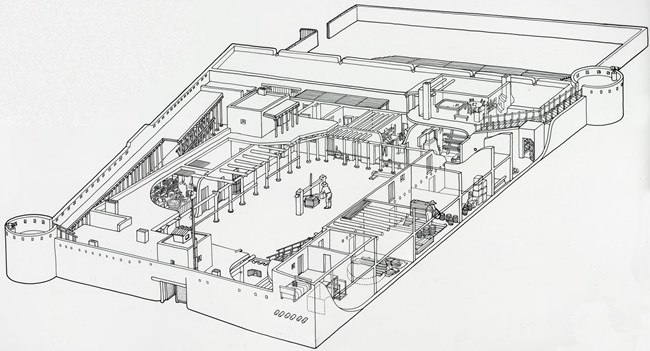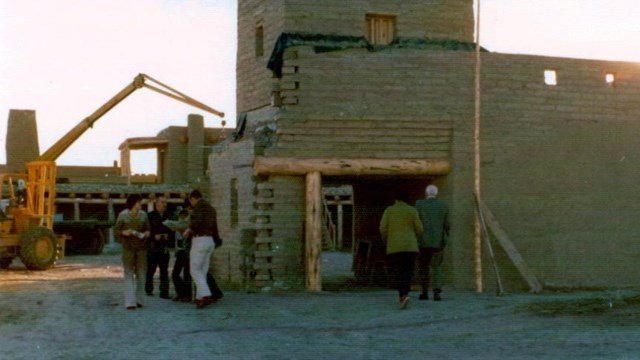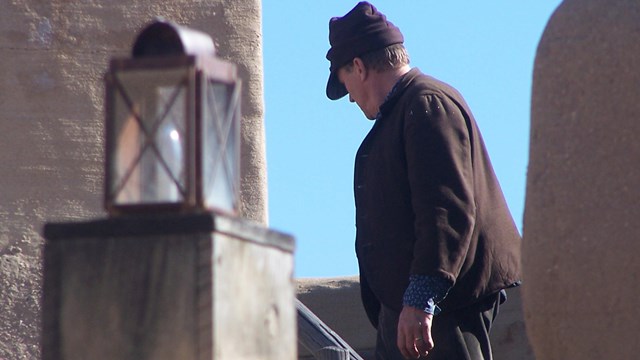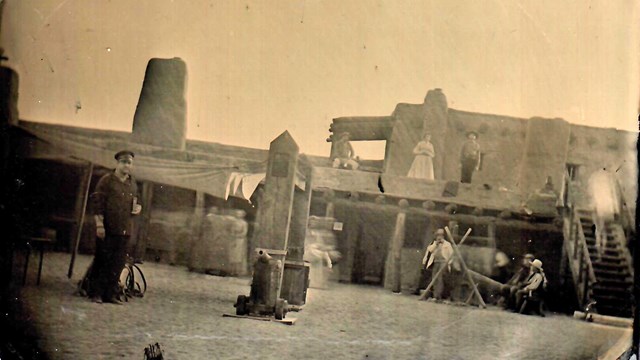
HFC Commissioned Art Collection/Nicholas Fasciano Bent's Old Fort National Historic Site preserves the resources associated with the Bent–St. Vrain trading empire, which radiated from Bent's Old Fort into what is now Texas, New Mexico, Kansas, Nebraska, Arizona, Utah, Wyoming, and Missouri. The fort solidified one of the most important and last established trading cartels in the Rocky Mountain West. William and Charles Bent, along with Ceran St. Vrain, built the original adobe fort on this site in 1833 to trade with Plains Indians and trappers. The fort quickly became the center of the expanding holdings of Bent, St. Vrain & Company, including Fort St. Vrain to the north and Fort Adobe to the south, along with company stores in Taos and Santa Fe. The primary trade was with the Southern Cheyenne and Arapaho Indians for buffalo robes. For sixteen years, the fort was the only major permanent stop on the Santa Fe Trail between Missouri and the Mexican settlements. The fort provided explorers, adventurers, and the U.S. Army a place to get needed supplies, wagon repairs, livestock, good food, water and company, rest and protection. During the war with Mexico in 1846, the fort became a staging area for Colonel Stephen Watts Kearny's "Army of the West." Disasters and disease led to the fort's initial abandonment in 1849. Bent's Old Fort was an important point of commercial, social, military, and cultural contact between Anglo-American, Native American, Hispanic, and other groups on the border of United States Territory. The fort served as a point of exchange for trappers from the southern Rocky Mountains, travelers from Missouri and the east, Hispanic traders from Mexico, and Native Americans, primarily from the Cheyenne, Arapaho, Comanche, and Kiowa Tribes. Today, Bent’s Old Fort National Historic Site features a reconstructed version of the 1840s adobe trading post. Archeological excavations and original sketches, paintings, and diaries were used to reconstruct the fort, to coincide with the nation’s bicentennial and Colorado’s centennial in 1976. The reconstructed fort and its setting along the Arkansas River allow visitors to learn about and reflect on the westward expansion of the United States. 
The Business of Bison
Bent’s Fort was built first and foremost for the growing bison robe trade. This trade would transform the southern plains. 
Reconstructing the Fort
Bent’s Old Fort was completely reconstructed by the National Park Service and was dedicated on July 25, 1976. 
People
Learn more about the trappers, traders, and other people who lived at the fort. 
Places
Learn more about the places associated with Bent's Old Fort 
Stories
Explore the world of Bent's Old Fort. 
The Santa Fe Trail
In its day, the Trail served primarily as a commercial highway to and from the southwest. |
Last updated: December 2, 2025
